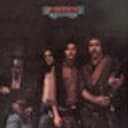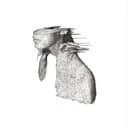Understanding the D Mixolydian Mode
The D Mixolydian scale follows the interval pattern 2-2-1-2-2-1-2 (whole-whole-half-whole-whole-half-whole), producing the notes D, E, F♯, G, A, B, C, D. As the fifth mode of G Major, it starts on the dominant (fifth) degree of that parent scale. The defining feature is the natural seventh (C), which would be C♯ in D Major, creating the characteristic Mixolydian sound. This single alteration—lowering the seventh by a half step—transforms a resolved major scale into an open, ambiguous modal sound that's perfect for extended grooves and modal harmony. The scale naturally contains a D7 chord (D-F♯-A-C), which is the foundation of its dominant character.
Why Mixolydian Dominates Rock and Blues
The D Mixolydian scale's prevalence in rock and blues comes from its built-in dominant seventh quality that creates perpetual tension without resolution. Unlike the major scale which wants to resolve back to the tonic, Mixolydian maintains a suspended, unresolved state that can sustain indefinitely, making it ideal for groove-based music. This quality allows musicians to build entire songs around a single chord or simple two-chord vamps without sounding repetitive or needing traditional harmonic resolution. The scale's major third (F♯) provides brightness while the flattened seventh (C) adds bluesy grit, creating a perfect balance that's simultaneously optimistic and edgy. This is why countless rock anthems and blues standards exploit the Mixolydian mode's distinctive character.
Chord Progressions and Practical Applications
The quintessential D Mixolydian progression is I-♭VII (D major to C major), which immediately establishes the modal sound and creates a distinctive rock feel. Other effective progressions include I-♭VII-IV (D-C-G) and the bluesy I-IV-♭VII pattern that appears in countless rock songs. The scale works perfectly over D7 chords, providing a resolved yet open sound that never feels conclusive. Compared to the D Dorian scale, D Mixolydian has a brighter, more major quality due to its major third, while maintaining similar modal ambiguity. This makes it excellent for creating riffs, solos, and vamps that maintain energy and forward motion without traditional cadences. In jazz contexts, D Mixolydian often functions as a color over dominant chords in ii-V-I progressions.
Learning Tips for Piano and Guitar
For pianists, begin by playing the G Major scale from D to D, which automatically produces D Mixolydian. Practice the scale hands separately, then together across two octaves, paying special attention to the natural C to internalize the flattened seventh sound. Improvise over a D7 chord or a simple two-chord vamp between D and C major to develop your ear for the modal quality. Guitarists can use the fifth position of the major scale pattern or visualize it as a major scale with a lowered seventh. Start with pentatonic licks and gradually add the fourth and seventh degrees. The key to mastering Mixolydian is developing an intuitive feel for its sound—listen to classic rock and blues recordings, notice how the flattened seventh creates that signature character, and experiment with emphasizing different scale degrees in your playing.
Modal Relationships and Creative Applications
Understanding D Mixolydian's relationships to other modes unlocks creative possibilities. While it's derived from G Major, it shares all but one note with D Major and sits tonally between major brightness and the darker quality of D Natural Minor. You can create modal interchange by borrowing chords from parallel modes—mix D Mixolydian with D Dorian to alternate between major and minor thirds, or blend with D Major for chromatic tension. Advanced applications include using D Mixolydian over altered dominant chords in jazz, creating polymodal textures, or employing it as a passing scale over non-diatonic chord progressions. The mode appears not just in rock and blues but also in country, funk, Celtic folk music, and fusion, making it one of the most versatile scales in contemporary music. Its bright yet unresolved character offers endless possibilities for composition and improvisation.





